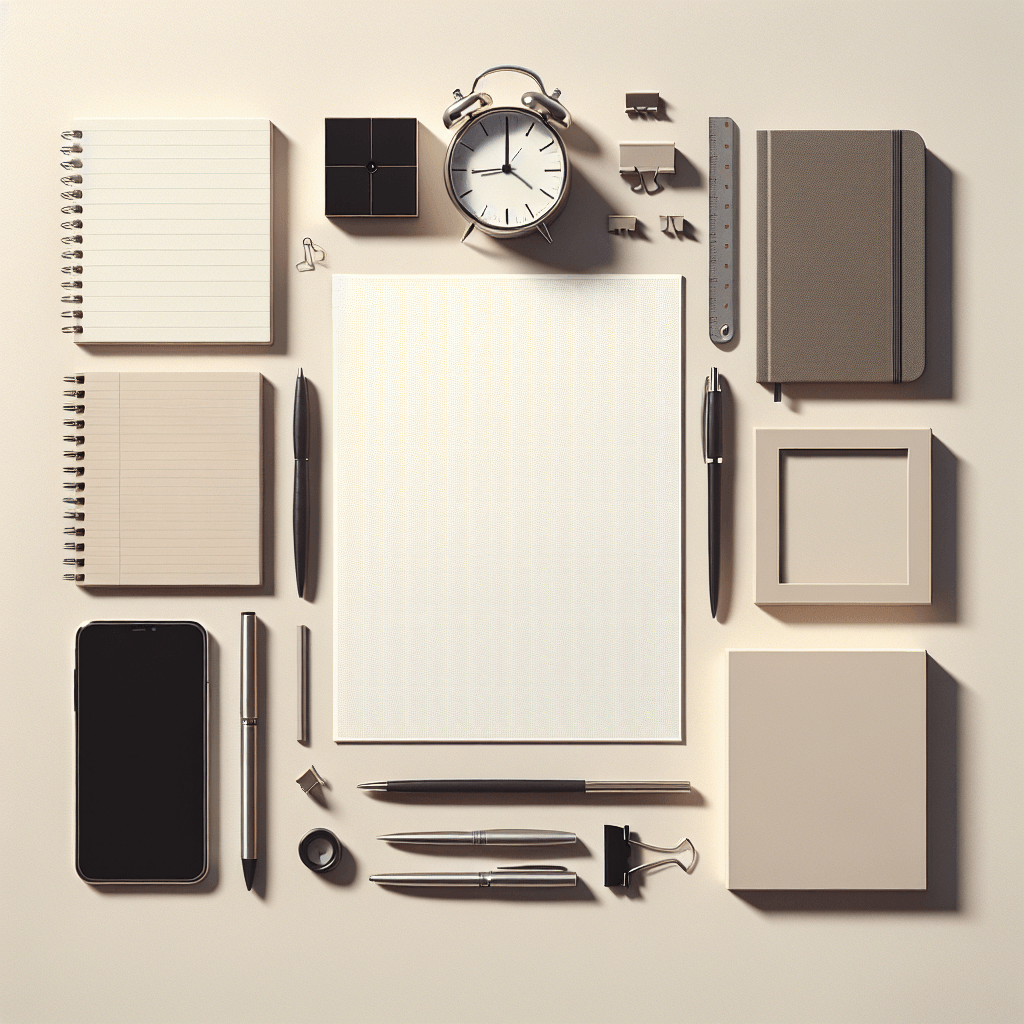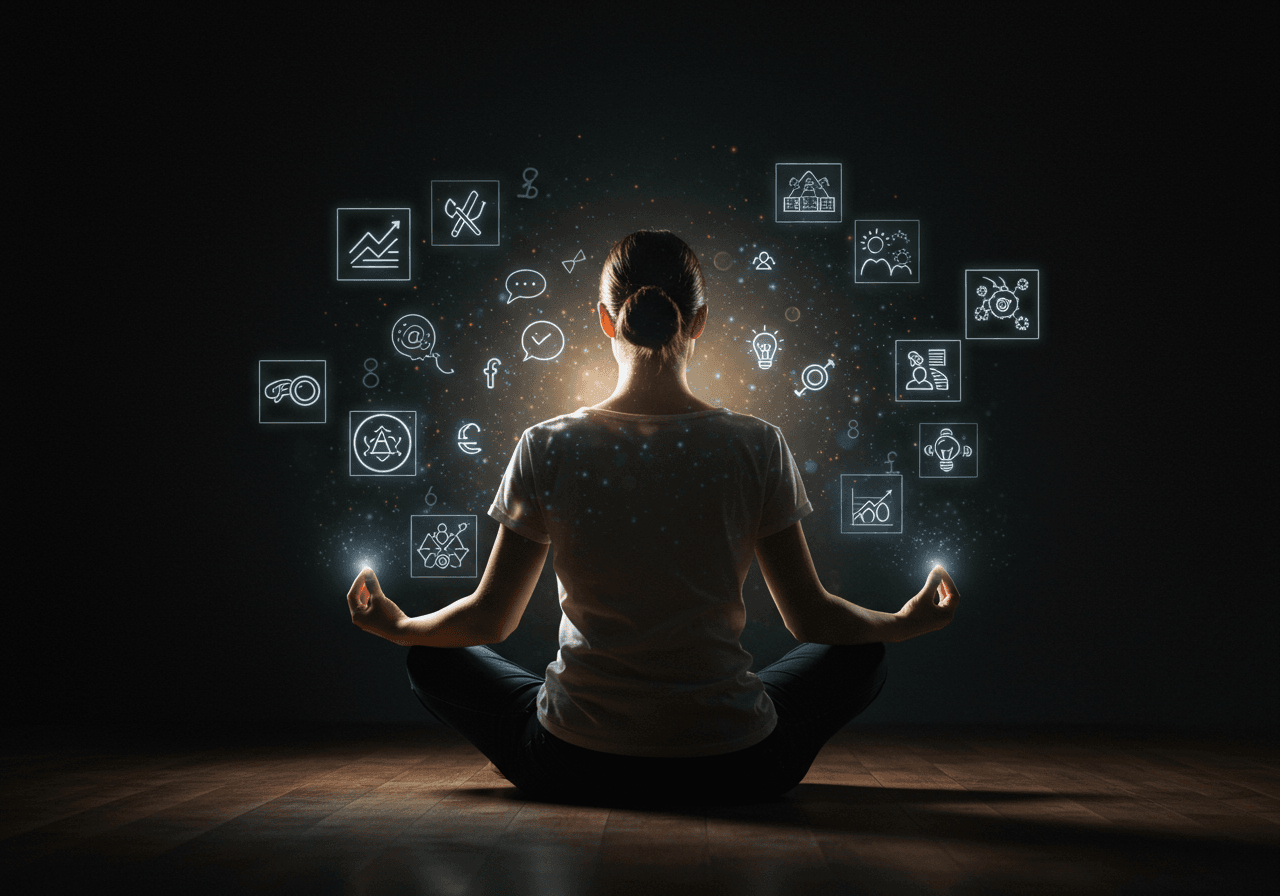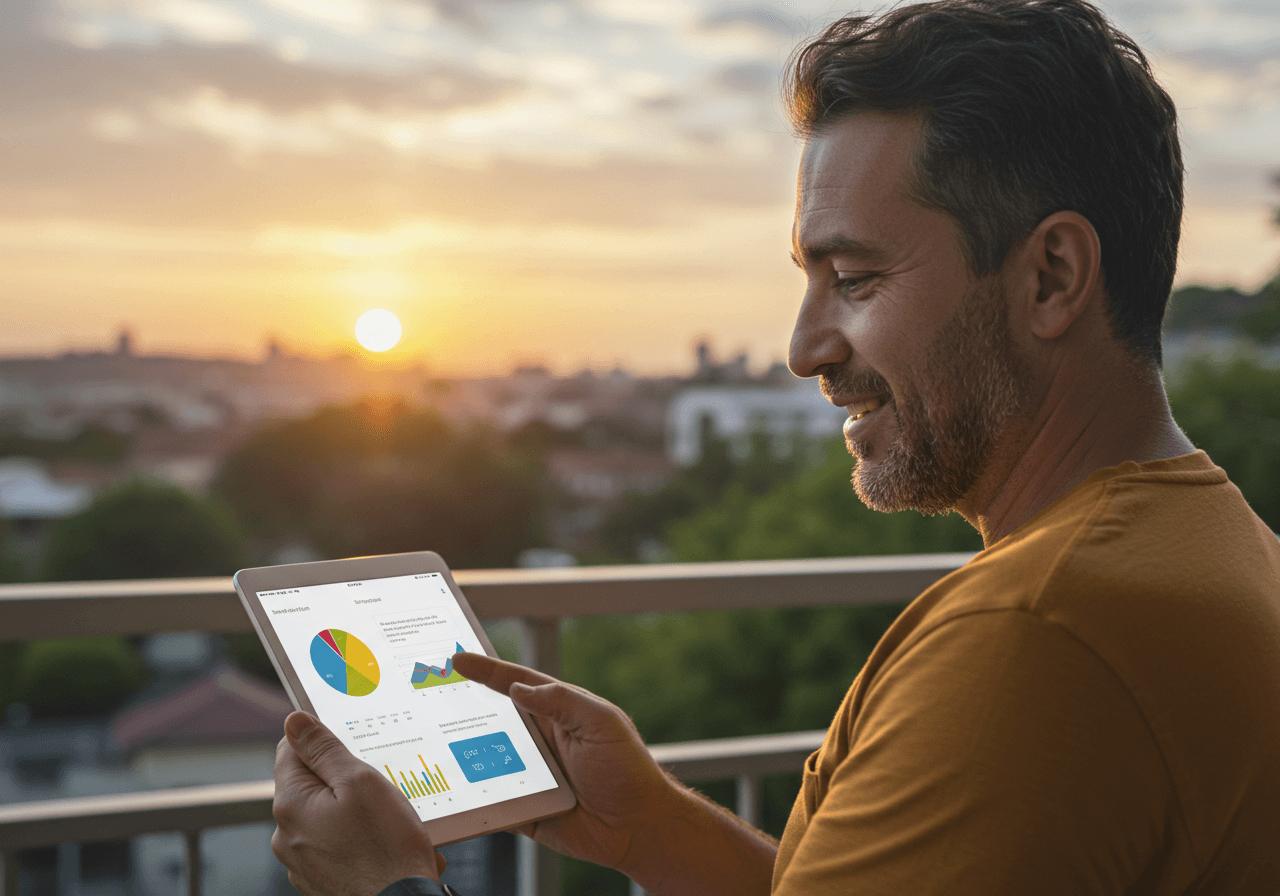Table of Contents
In today’s fast-paced digital world, managing your time effectively is more crucial than ever. As digital devices increasingly dominate our lives, it becomes vital to find balance and maintain focus amidst the noise.
This is where digital minimalism offers a significant advantage.
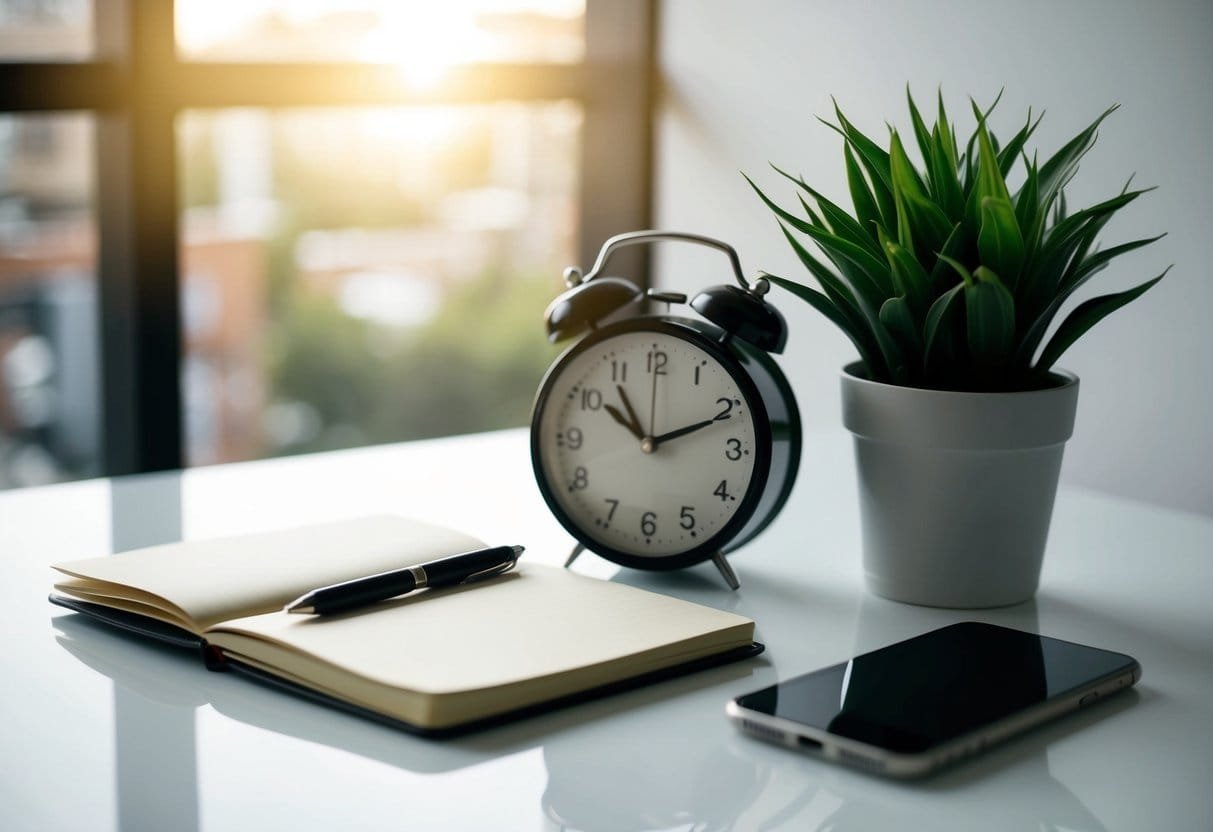
The principles of digital minimalism empower you to make mindful choices about the use of your devices, focusing only on information and tools that add genuine value to your life and work.
It’s not just about reducing screen time but also about strategically organizing your environment for optimal efficiency.
By intentionally curbing unnecessary digital distractions, you can enhance your productivity and maintain a healthier work-life balance.
The principles of digital minimalism empower you to make mindful choices about the use of your devices, focusing only on information and tools that add genuine value to your life and work.
It’s not just about reducing screen time but also about strategically organizing your environment for optimal efficiency.
Understanding how to leverage technology mindfully can transform how you approach tasks and manage your schedule. This guide provides practical advice on adapting digital minimalist strategies that help you redefine what productivity means in a constantly connected world.
As you embrace these minimalist practices, you’ll likely find increased satisfaction and reduced stress, paving the way for greater success.
Key Takeaways
- Digital minimalism helps reduce distractions and boost productivity.
- Mindful technology use can transform your time management.
- Strategic planning enhances focus and supports a work-life balance.
Foundations of Digital Minimalism

Digital minimalism emphasizes the essential use of technology, allowing you to focus on meaningful activities. This approach can improve how you manage time, reduce distractions, and increase productivity.
Understanding Digital Minimalism
Digital minimalism is about consciously choosing how technology fits into your life. You focus on a limited set of digital tools that significantly enhance your everyday experiences.
This involves careful selection and optimization of online activities that align with your personal values and goals.
By adopting digital minimalism, you reduce unnecessary digital clutter and prevent technology from overwhelming your daily routine. The goal is not to eliminate technology but to ensure it serves a purposeful role.
Philosophy of Minimalist Time Management
Minimalist time management centers around prioritizing essential tasks and reducing digital distractions.
You learn to allocate your time effectively by organizing and decluttering your digital environment.
Mindful digital minimalism helps you identify and engage in activities that provide genuine value. This technique can lead to improved focus and productivity by dedicating time only to tasks that matter most.
Practicing this philosophy fosters a sense of control and balance in your digital life.
Strategic Planning for Minimalist Living

Strategic planning in minimalist living focuses on using time management to enhance productivity and streamline daily responsibilities. By setting practical goals and prioritizing tasks, you can simplify your life and efficiently allocate your time.
Setting Realistic Goals
Setting realistic goals is essential for effective task management.
Start by identifying the core areas of your life that need attention. Personal growth, professional responsibilities, and health are common focal points.
Break your goals into actionable steps and use a simple table to organize them by priority and deadline. For example:
| Goal | Priority | Deadline |
|---|---|---|
| Develop new skill | High | 3 months |
| Exercise regularly | Medium | Ongoing |
| Declutter workspace | Low | 1 month |
This structure helps in tracking progress and ensures goals remain achievable. Keep your aspirations aligned with available resources and time constraints to avoid overwhelm.
Prioritizing Tasks Efficiently
Efficiently prioritizing tasks involves distinguishing between urgent and important activities.
Employ a priority matrix to manage your schedule effectively. Here’s a simple way to categorize tasks:
- Urgent and Important: Do these immediately.
- Important but Not Urgent: Schedule for later.
- Urgent but Not Important: Delegate if possible.
- Neither Urgent nor Important: Eliminate or minimize time spent.
Leverage digital tools like calendars and reminders to maintain focus and enhance accountability.
Regularly review your priorities to accommodate changes in circumstances and commitments, ensuring your scheduling remains flexible yet effective.
Optimizing Your Environment
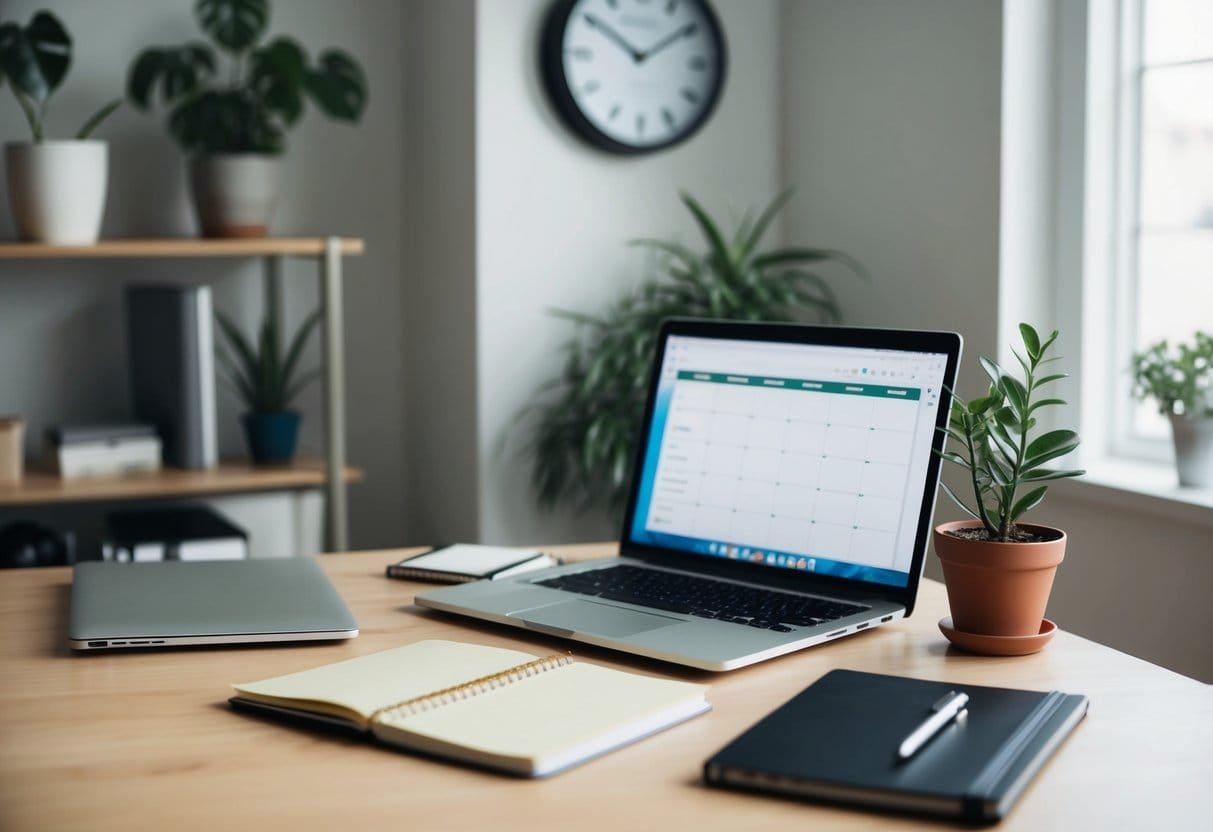
Streamlining your environment can greatly boost time management and productivity. By reducing physical clutter, you enhance your ability to focus.
Establishing a workspace that encourages concentration is crucial for effective digital minimalism.
The Impact of Physical Clutter
Physical clutter can disrupt your focus and impede productivity. Disorganized spaces often lead to frequent distractions, making it difficult to prioritize tasks.
Opt for a decluttered setting by removing unnecessary items from your workspace.
Regularly assess your surroundings to identify objects that do not serve a purpose. Organize remaining items in a way that ensures easy access and minimal visual clutter.
Keeping only essentials in your workspace not only creates a calming environment but also enhances your overall user experience.
Creating a Focused Workspace
Designing a dedicated and focused workspace is critical for effective time management.
Begin by selecting tools and equipment that promote efficiency. Arrange your desk to minimize distractions; keep devices and accessories organized.
Consider ergonomic elements like chair height and screen placement to promote comfort and support prolonged focus.
Implement technology or apps that assist in maintaining a digital minimalist approach, such as distraction-blockers and task managers. A focus-friendly workspace helps to align your physical environment with digital habits.
Leveraging Technology Mindfully
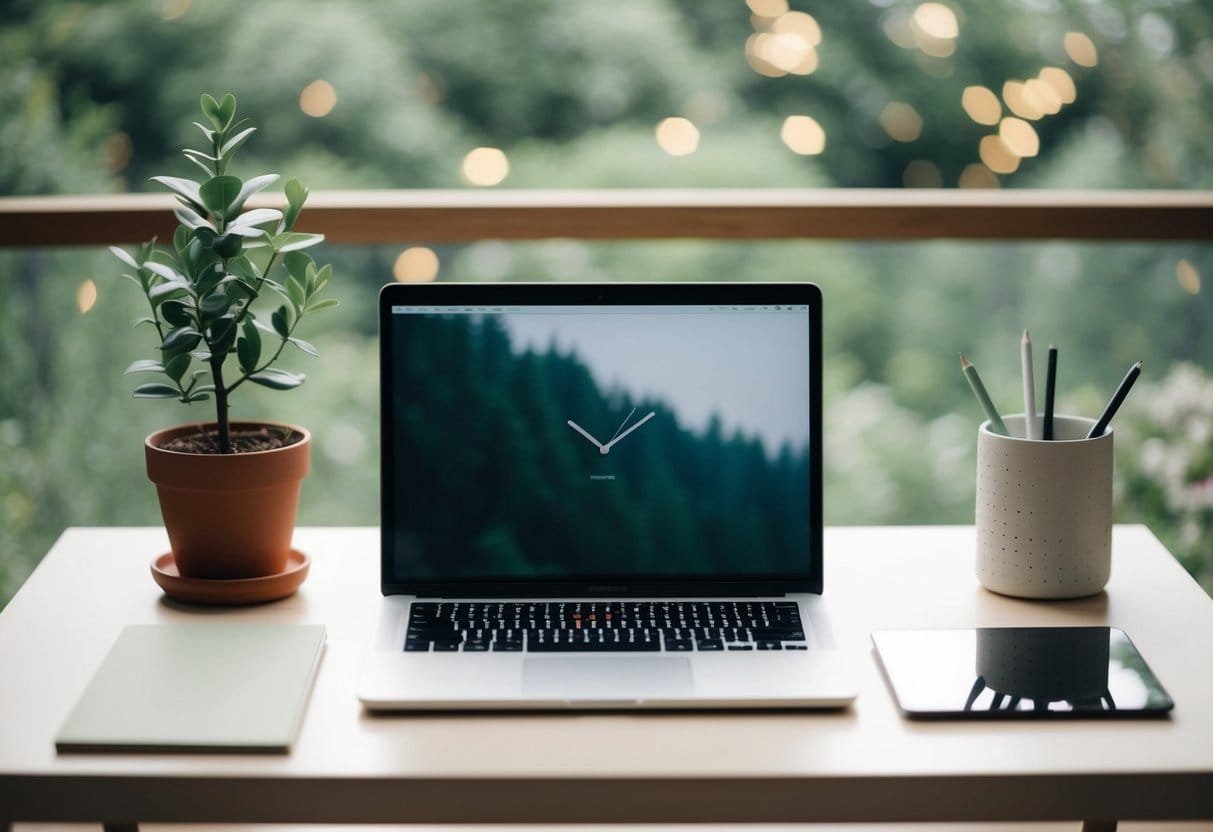
Mindfully leveraging technology is essential for improving productivity and maintaining a clear mental space.
Selecting Essential Digital Tools
Choosing the right digital tools is crucial for maintaining focus and productivity.
Begin by identifying the tasks that are essential to your daily workflow. Then, determine which tools can assist you in completing these tasks efficiently. For instance, if communication is key for your work, tools like Slack or Microsoft Teams might be valuable.
Prefer tools that integrate well and provide support for the latest advancements in artificial intelligence.
AI-driven applications can automate repetitive tasks and offer you more time to focus on strategic work.
Prioritize simplicity and functionality over feature-heavy tools that complicate workflows.
Choose productivity apps that minimize distractions and promote deep work sessions without constant notifications or temptations to check irrelevant information.
Streamlining your selection to essential tools reduces digital clutter and enhances focus.
Digital Decluttering Practices
Engaging in regular digital decluttering is another critical aspect of digital minimalism.
Start with your devices: remove unused or redundant applications that do not add value to your tasks.
Arrange information and files in an organized manner, using folders and tags to ensure quick access when needed.
Consider establishing a routine for digital decluttering, such as reviewing your device contents monthly.
Turn off non-essential notifications to minimize distractions and create an environment where you can concentrate without constant interruption.
Assess your digital communication tools and adjust settings to ensure they align with your productivity goals. By keeping your digital environment tidy, you enhance your capacity for focused and meaningful work.
Redefining Productivity

In digital minimalism, focusing on meaningful work and minimizing distractions can transform how you approach productivity. Prioritizing quality tasks enhances personal productivity and task management.
Quality Over Quantity
When you focus on quality rather than the sheer amount of work, personal productivity improves significantly.
Prioritizing tasks allows you to concentrate your efforts on work that truly matters. This approach ensures that each effort contributes to your main objectives, making your workflow more efficient.
Shifting focus from numerous trivial tasks to fewer, high-impact ones also reduces burnout.
Emphasize important tasks that align with your goals. Use tools like task management apps to maintain clarity and organization.
This balance can boost your motivation, leading to sustained productivity.
The Role of Deep Work
Deep work involves engaging in activities that require intense focus and cognitive effort. This state is essential for tackling challenging tasks without interruptions.
By eliminating distractions, you can improve concentration and achieve more in less time.
Implementing deep work practices helps refine your attention span, enhancing personal productivity.
Set specific time blocks for uninterrupted work to cultivate this habit.
Establishing a daily routine that dedicates time for deep work can greatly enhance your ability to manage tasks effectively. It allows you to produce work of higher value, which is key in digital minimalism.
Family and Digital Minimalism
Incorporating digital minimalism into family life helps you foster meaningful connections. By shifting the focus from screens to shared experiences, families can create a balanced environment that values presence over constant digital engagement.
Incorporating Minimalism into Family Life
Embracing digital minimalism within your family involves consciously deciding what digital tools enhance collective well-being.
Begin by evaluating the technology each family member uses daily. Identify apps or devices that genuinely contribute to education, work, or communication.
Encourage open discussions about the digital habits influencing family interactions.
Set collective goals, such as screen-free dinners, where everyone commits to leaving devices elsewhere.
Implement family-wide tech-free hours to encourage meaningful conversations and activities.
Work with your family to organize and reduce digital clutter. Streamline shared devices by removing unnecessary apps and disabling non-essential notifications.
Creating tech-free zones in your home can also encourage everyone to engage more fully in shared spaces.
Promoting Low Tech Family Activities
Low-tech activities help your family reconnect without the distractions of screens.
Plan regular family outings such as nature walks, picnics, or visits to local attractions, allowing you to bond and explore new environments together.
Encourage creative pursuits like art projects, board games, or storytelling evenings that bring everyone together around a shared activity.
These experiences can be both educational and entertaining, fostering creativity and teamwork.
Establish a routine that includes reading together as a family, exploring books that spark conversation and curiosity.
This not only nurtures a love for reading but also builds strong, shared memories.
Pursuing hobbies collectively, like gardening or cooking, can teach valuable skills while strengthening family bonds.
Overcoming Obstacles
When managing time digitally, common obstacles like procrastination and maintaining consistency can hinder progress. Understanding how to effectively handle these challenges is crucial to realizing the full benefits of a minimalist approach.
Dealing with Procrastination
Procrastination often stems from feeling overwhelmed by tasks.
Breaking them into smaller, manageable parts can significantly reduce this stress. Creating a priority list helps you focus on tasks that offer the most value.
Using digital tools for-reminders is beneficial. Set alerts to keep tasks at the forefront and prevent last-minute scrambles.
Apps designed for productivity can help monitor progress.
Staying Consistent in a Fast-Paced World
Maintaining a steady routine requires effort, especially with constant changes in a fast-paced environment.
Establishing a daily schedule and adhering to it can enhance consistency.
Leverage technology but limit distraction by minimizing notifications on devices. This can help maintain focus on essential tasks.
Identify time-wasting activities and replace them with productive habits.
Regularly reviewing your digital habits ensures alignment with your priorities. Consistency is also about resilience in adapting to unexpected changes while staying true to your objectives.
Frequently Asked Questions
Explore how you can make the most of digital tools for efficient time management while maintaining a minimalist approach. Discover practical strategies and the tangible benefits of incorporating digital minimalism into your daily routine.
How can one utilize digital tools effectively for time management?
To maximize time management with digital tools, focus on apps that streamline tasks.
Prioritize those that integrate well with your existing workflow and provide clear visualizations of your schedule.
Set alerts and reminders to keep you on track without overwhelming you with notifications.
What are the best strategies for adopting a minimalist digital lifestyle?
To adopt a minimalist digital lifestyle, reduce the number of apps and tools you use to only those essential for your personal and professional goals.
Organize your digital environment by decluttering files and folders and setting limits on screen time.
Emphasize quality over quantity in the information and tools you consume and use.
What are the benefits of applying digital minimalism principles to time management?
Adopting digital minimalism enhances focus and productivity by eliminating unnecessary distractions.
By simplifying your digital landscape, you can allocate time more efficiently and reduce stress.
The clarity and organization provided by minimalism help streamline your daily activities and facilitate a more deliberate allocation of resources.
How can professionals in digital industries manage their time without digital clutter?
Professionals can manage time effectively by implementing a strict schedule of digital tools use and avoiding unnecessary digital distractions.
Consolidate tasks using multifunctional applications to minimize clutter.
Establish routine checks for communication platforms and limit the time spent on non-essential digital activities.
In what ways can Apple Notes be optimized for productivity and time management?
Apple Notes can be optimized by setting up folders for different projects, using tags for easy searching, and maintaining a checklist.
Various organizational tools within Notes allow for quick information retrieval.
Its integration with other Apple apps can provide seamless tracking and management of tasks.
How does one balance connectivity and digital minimalism when managing time?
Balancing connectivity involves setting boundaries on digital interactions while maintaining essential communications.
Schedule specific times for checking emails and messages to prevent constant interruptions. Utilize focus settings on devices to maintain concentration when needed, allowing you to effectively manage time without being overwhelmed by connectivity demands.
Ready to embrace digital minimalism for better time management?
Explore these resources:
- “Digital Minimalism: Choosing a Focused Life in a Noisy World” by Cal Newport (the foundational text)
- “Deep Work: Rules for Focused Success in a Distracted World” by Cal Newport (complements digital minimalism for productivity)
- “Indistractable: How to Control Your Attention and Choose Your Life” by Nir Eyal
- “The 7 Habits of Highly Effective People” by Stephen Covey (for foundational time management principles)

